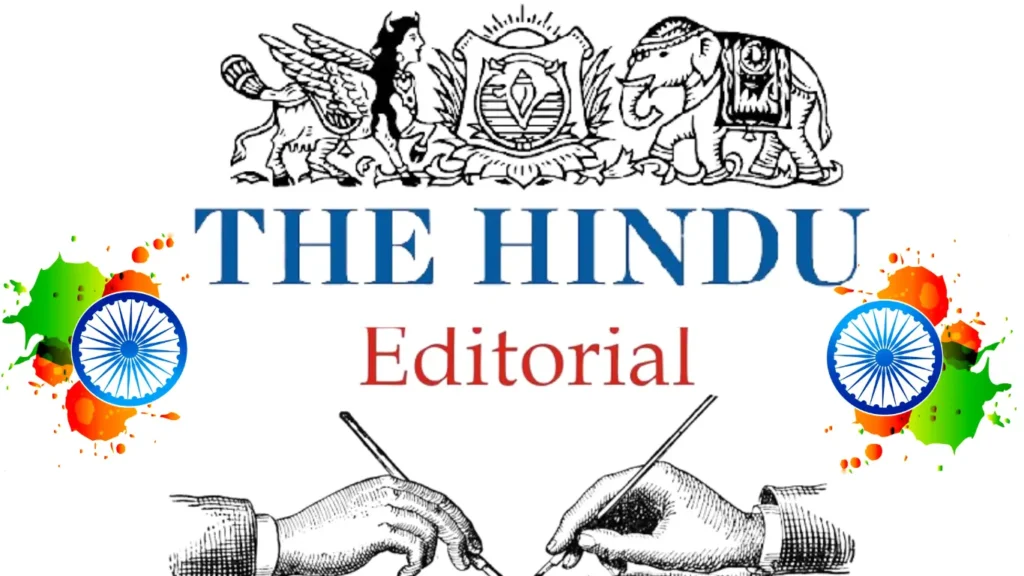Analysis of The Hindu Editorial 1: India’s place in Russia-Ukraine peace-making
Context
India is showing signs of playing a role in peace-making efforts in the Russia-Ukraine conflict, though there are many complexities involved.
Introduction
Two years after distancing itself from Europe’s “regional” conflicts, India’s potential role in mediating the Russia-Ukraine war has gained momentum. With key visits by Prime Minister Narendra Modi to Moscow and Kyiv, and meetings with global leaders such as President Zelenskyy and President Putin on the horizon, along with efforts by National Security Adviser Ajit Doval and Foreign Minister S. Jaishankar, India’s diplomatic presence in the matter is increasing.
India’s Diplomatic Engagement
India is one of the few nations maintaining contact with both sides of the conflict, balancing relations between the West and Eurasian powers. This diplomatic outreach is exemplified by Prime Minister Modi briefing U.S. President Biden after his Ukraine visit and Ajit Doval’s discussions with President Putin in Russia.
India’s Strategic Advantages
- Balanced Engagement: India maintains open communication channels with both Russia and Ukraine, offering a unique position in global diplomacy.
- Historical Non-Alignment: India’s policy of non-alignment and strategic autonomy has been consistent, as seen in its abstention from UN votes and refusal to align with Western sanctions.
- Voice for the Global South: India, as the G-20 chair, has focused on global concerns like energy and food security rather than taking sides in the conflict.
- Economic Ties with Russia: India’s increasing imports of Russian oil have strengthened its trade ties, reflecting its economic principles rather than opportunism.
The Big Picture
While the war continues with no clear resolution, the possibility of escalation remains, especially with Ukraine seeking more advanced Western weapons and Russia warning of heightened conflict. India’s efforts are in line with historic diplomatic missions, such as Jawaharlal Nehru’s mediation during the Cold War, making the current situation a potential legacy-defining moment for Modi.
Challenges for India’s Peace Plan
India must craft a unique proposal, as existing efforts by other nations have faced rejection. Russia and Ukraine have dismissed multiple peace offers, from the Bürgenstock Communiqué to the Brazil-China joint proposal. India’s stance, as outlined by Foreign Minister Jaishankar, emphasizes dialogue, but lacks a concrete plan.
A Path Forward
To emerge as a serious peace broker, India may need to explore hosting a summit or deeper involvement in direct negotiations. However, India’s domestic issues, like the Manipur conflict, and other global crises like those in Gaza and Sudan, present challenges to devoting resources to international mediation.
Conclusion
India stands at a critical juncture, with the potential to shape global peace efforts in the Russia-Ukraine war. As a member of both the Quad and BRICS, its role is pivotal in balancing global powers. Timing and consistency will be key in India’s success, with the need for a carefully crafted, concrete peace proposal to make a lasting impact.
Analysis of The Hindu Editorial 2: Wrong notion
Context
The proposal for simultaneous elections has faced significant pushback from various states, with concerns that it undermines federal principles.
Introduction
Despite widespread opposition from political parties and civil society, the Indian government has opted to move forward with the recommendations of a high-level committee led by former President Ram Nath Kovind. This decision advocates for simultaneous Lok Sabha and State Assembly elections.
Key Recommendations of the Kovind Committee
The committee’s vision emphasizes initiating simultaneous elections for Lok Sabha and State Assemblies, followed by local municipal and panchayat elections within 100 days post-general elections. Implementing this plan will require substantial constitutional amendments, necessitating approval in both Parliament and state assemblies.
Rationale Behind the Proposal
- Cost Efficiency: Proponents argue that conducting elections concurrently would significantly lower expenses.
- Enhanced Governance: The continuous election cycle in India is said to detract from effective governance, as parties remain in a perpetual campaign mode.
Concerns Raised by States
- Lack of Empirical Evidence: Critics highlight the absence of solid data to support claims of cost reduction.
- Extended Election Period: The already lengthy election process may be prolonged rather than streamlined under this proposal.
- Mid-term Election Implications: The committee suggests that if a State Assembly dissolves before its term ends, it could trigger mid-term elections, leading to shortened tenures for newly elected assemblies—contradicting the aim of efficiency and raising federalism concerns.
Impact on Multi-Tier Governance
- Importance of Each Governance Level: Each tier of government plays a vital role in representative democracy, and elections should reflect the unique responsibilities at each level.
- Voter Choices and Representation: Allowing elections to proceed independently empowers voters to select representatives based on diverse criteria—party loyalty, candidate quality, or local issues.
- Perception of Campaigning: The notion that representatives are always in campaign mode is more about centralized party strategies than a flaw in the electoral system.
- Threat to Federalism: Merging elections could diminish the significance of state and local governance structures, thus undermining federal principles.
- Tenure Reduction: Implementing simultaneous elections may necessitate shortening the terms of various state governments, raising further questions about fairness.
Moving Forward
To responsibly pursue simultaneous elections, the Union government should:
- Conduct comprehensive research on potential costs and governance impacts.
- Thoroughly evaluate constitutional amendments and their effects on federalism.
Engaging with key stakeholders and exploring alternatives to lengthy electoral periods will enhance trust and cooperation.
Conclusion
Without meaningful dialogue and collaboration, parties and civil society committed to federalism are likely to reject the Union government’s proposal. Implementing pilot programs can offer valuable insights and ensure stakeholder acceptance. By prioritizing transparency and communication, the government can address concerns and foster a more inclusive decision-making process. A phased approach with pilot initiatives will facilitate a more manageable implementation, balancing efficiency with respect for India’s federal structure.

